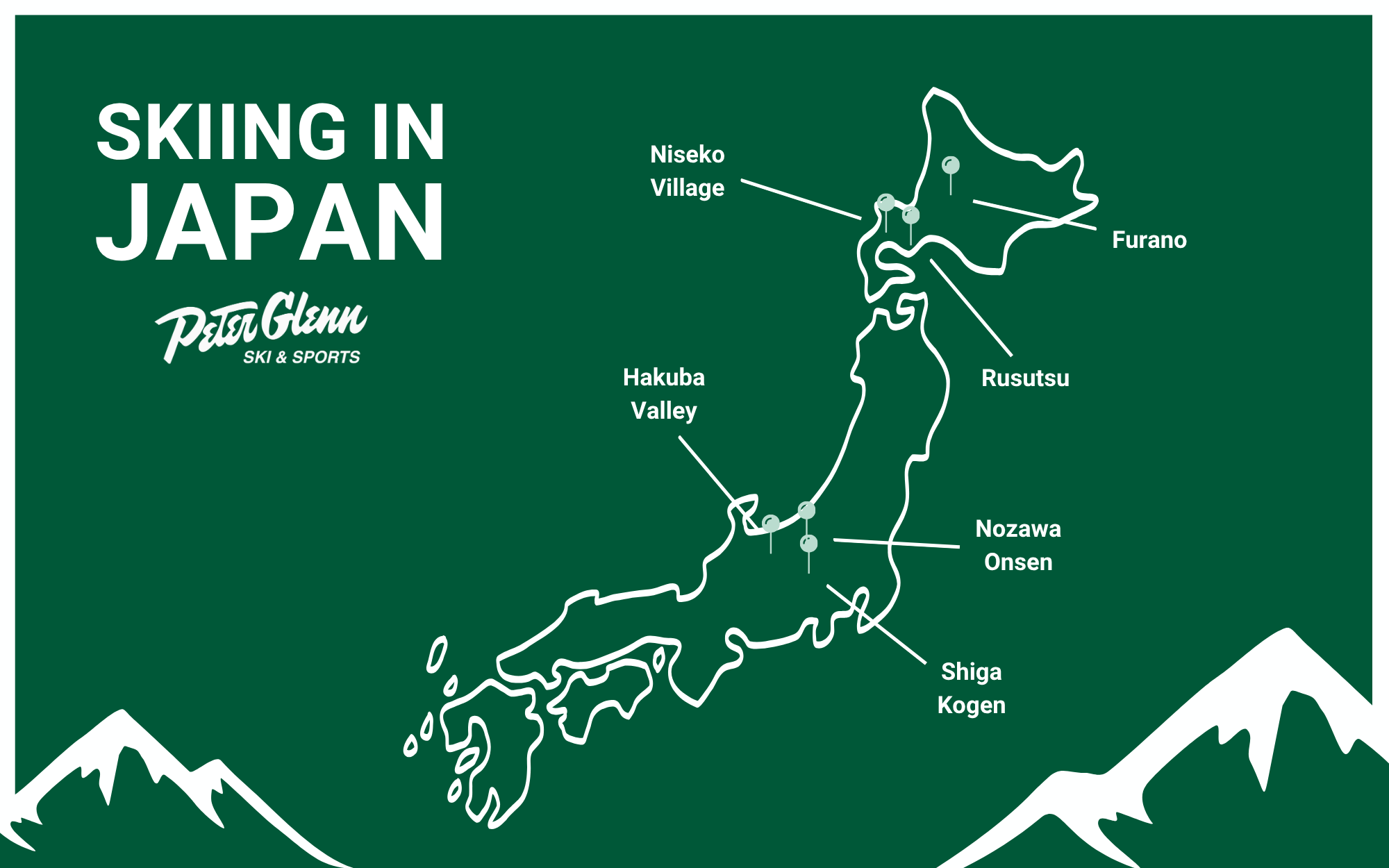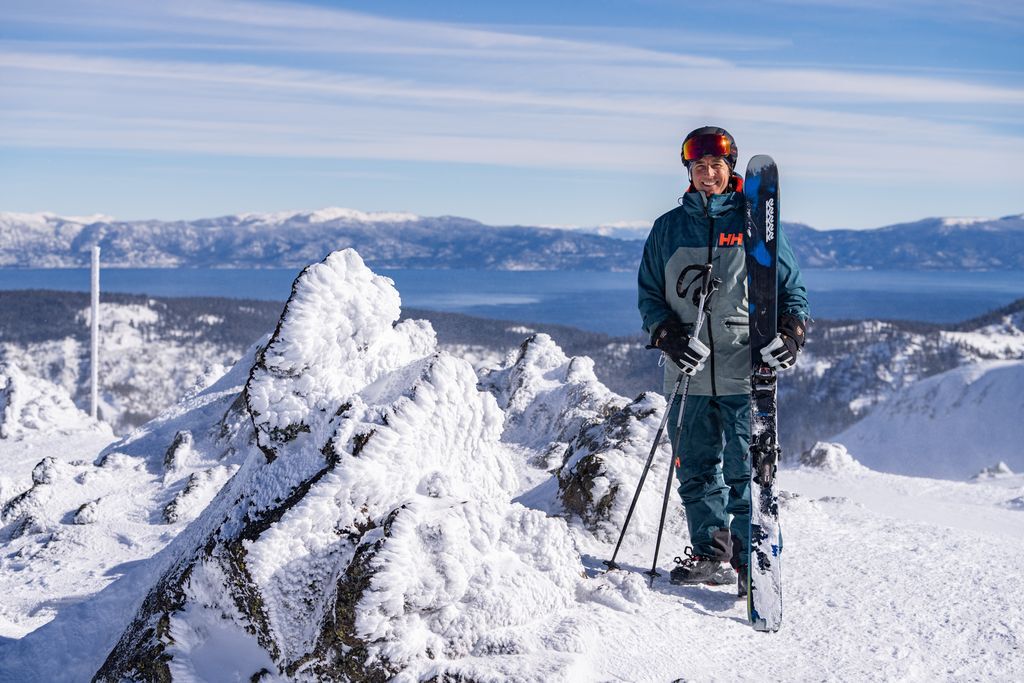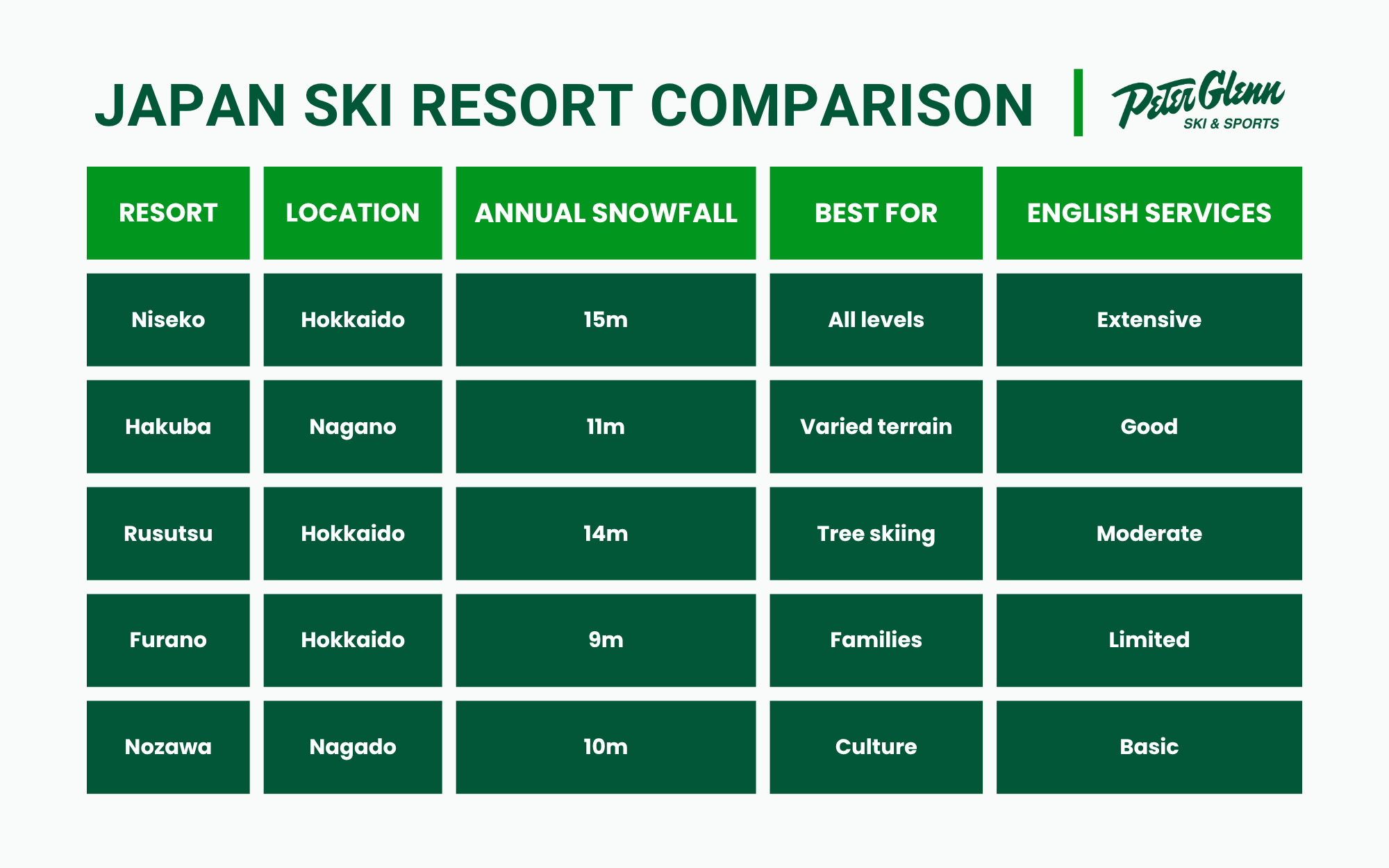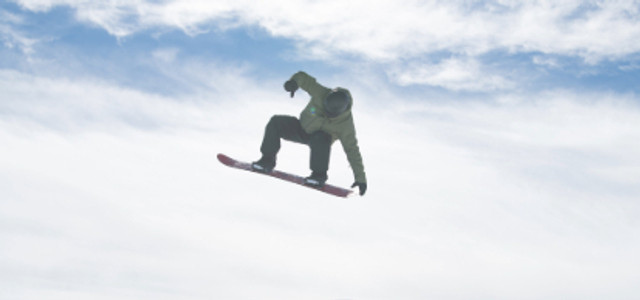What is Skiing in Japan Like? What to Know Before You Go
Posted by Peter Glenn Staff on Oct 16th 2025
Table of Contents
The Short Answer: Japan offers world-class skiing with some of the deepest snow amounts globally, particularly in Hokkaido and the Japanese Alps. The best time for a ski holiday is between December and March, with January and February offering the most consistent Japanese powder conditions.
Japan stands as one of the world's top ski destinations, thanks to cold winds sweeping across the Sea of Japan that blanket the resorts in legendary powder snow. From Niseko Village in the north to the majestic Japanese Alps in central Honshu's main island, the country offers an incredible range of diverse terrain for all skill levels.
Beyond the slopes, visitors discover a perfect blend of winter sports and Japanese culture, with hot springs, traditional inns, and local cuisine creating an unforgettable experience that goes well beyond just skiing.
Top Ski Destinations in Japan
Niseko
Niseko, located in Hokkaido, stands as Japan's premier ski resort, drawing visitors worldwide to its legendary powder snow. The resort spans four interconnected areas – Hirafu, Niseko Village, Annupuri, and Hanazono, offering diverse terrain for all skill levels.
Hirafu, the largest ski area, bustles with international visitors and night skiing options. What sets Niseko apart is its position facing the iconic Mount Yotei, creating stunning panoramic views, and its remarkable Japanese powder snowfall. The resort's English-friendly facilities include bilingual ski instructors and clear signage throughout.
Hakuba Valley
Hakuba Valley in Nagano Prefecture earned worldwide recognition as a host venue for the 1998 Winter Olympics. This sprawling Japanese resort encompasses 10 distinct ski areas, including notable zones like Happo-One, Goryu, and Hakuba 47. With over 200 runs combined and 11 meters of annual snow, Hakuba offers terrain diversity unmatched in Japan. Its convenient location, just 90 minutes from Tokyo via bullet train, makes it especially attractive for visitors based in the capital.
Hidden Gems
Several Japanese locations offer exceptional skiing without the crowds of major resorts. Rusutsu Ski Resort, near Niseko, features outstanding tree skiing and modern lift infrastructure across three interconnected peaks. Furano, east of Sapporo, combines gentle slopes with pristine snow conditions. Nozawa Onsen uniquely blends traditional hot springs culture with excellent skiing opportunities.

Planning Your Japanese Ski Trip
Best Times to Visit
The Japan ski season runs from December through April, with January and February offering the most reliable snow conditions. During these peak season months, you'll find consistent Japanese powder and optimal skiing conditions across all ski resorts. December starts the season with fresh snow, particularly in Niseko Village and higher-altitude areas like Nagano Prefecture. March can still deliver significant powder days, though conditions become less predictable with occasional warm spells.
Transportation Tips
Getting to Japanese resorts typically involves a combination of transportation methods. From Tokyo, you have several options:
- Niseko: 90-minute domestic flight to New Chitose Airport, followed by a 3-hour bus ride
- Hakuba Valley: 4-5 hour private transfer from Tokyo airports via Chuo Taxi service
- Nearby Ski Areas: Bullet train access, like Gala Yuzawa with its convenient gondola connection right at the train station
Many resorts provide free shuttle services from local train stations, making it easier to reach your final destination. For resort-hopping, local buses, such as the Hokkaido Resort Liner, connect various ski areas, though schedules can be limited during peak times.
Cost Breakdown
Japan skiing offers good value compared to many Western resorts.
Lift Tickets
- Daily passes: 3,500-5,000 yen ($24-35 USD)
- Multi-day passes available at most resorts
Equipment Rental
- Basic ski/snowboard set (including boots and poles): From 3,300 yen per day
- Premium gear available at higher rates
- Advance booking recommended for specific sizes
Accommodation
- Budget options: From 5,000 yen per night
- Mid-range hotels: 15,000-30,000 yen per night
- Luxury ski-in/ski-out: 40,000+ yen per night
- Traditional ryokans and western-style hotels available at most Japanese resorts

On-Mountain Experience
Japanese ski resorts offer outstanding facilities and services that cater to both beginners and advanced skiers. Every major resort provides complete rental equipment, from skis and snowboards to boots and poles. Most rental shops are conveniently located at the base of mountains near lifts and gondolas, with lift tickets and equipment rentals starting around 4,450 yen for a standard adult set.
Après-Ski & Culture
What sets Japanese resorts apart is their unique après-ski culture. After a day on the slopes, you can soak in natural hot springs to soothe tired muscles while taking in mountain views. The food scene adds another dimension to your trip from steaming bowls of ramen to fresh sushi and local sake at cozy izakayas. During winter, many regions host spectacular snow festivals featuring intricate ice sculptures and magical illuminations that transform the powdery snow landscape.
Ski Schools and Instruction
Ski schools are readily available across Japan's resorts, with many offering both group and private lessons. Popular destinations like Niseko Village and Hakuba Valley feature English-speaking instructors, though it's wise to book in advance during peak season. First-time skiers can find half-day or full-day programs, while advanced skiers can opt for specialized technique courses or backcountry skiing tours.
Terrain Variety
Japanese resorts have diverse terrain that accommodates all skill levels.
- For beginners, areas like Niseko and Furano offer gentle slopes and dedicated learning zones with minimal crowds.
- Intermediate skiers will find countless groomed runs, particularly at Hakuba Valley, which connects multiple ski areas.
- Advanced riders can explore challenging terrain, including legendary powder bowls in Japan and tree skiing runs at Rusutsu Ski Resort.
Safety and Guidelines
Japanese resorts maintain strict safety protocols. Most areas require all skiers to follow clearly posted rules in both Japanese and English. Off-piste policies vary significantly; some resorts like Shiga Kogen completely prohibit it, while others like Niseko allow controlled backcountry access. Snow conditions in Japan can change rapidly,so resorts post daily weather forecasts and may close certain runs during storms or high winds.

Go International with Ski Gear From Peter Glenn
Skiing in Japan offers an unmatched blend of legendary powder and rich Japanese culture experiences. From Niseko Village's expansive terrain to the charming slopes of Nozawa Onsen, each Japanese resort brings its own character to your ski holiday adventure. The combination of reliable snow conditions, modern facilities, and welcoming atmosphere makes Japan's ski resorts a top choice for skiers of all skill levels. Check official resort websites and local tourism boards for the latest information on snow conditions, events, and transportation options.
Before heading to Japan's powder paradise, shop with Peter Glenn Ski & Sports for ski jackets, ski pants, and more high-quality gear for Japanese powder conditions. Our knowledgeable staff can help you choose equipment that matches both your skill level and the unique characteristics of Japan's deepest snow.



